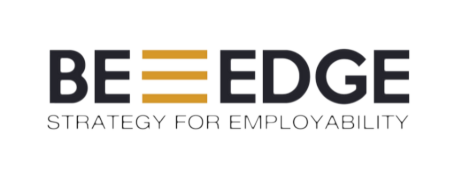
Establishing My Competitive Advantage in a Foreign Marketplace
by Maria Andrea Angarita
October 10, 2024
Was it hard for me to establish a presence in a foreign environment? Yes, it was.
It is something that happens to any wishful international student who wants to follow higher education in the US or any international destination different from their home country.
In the United States, the international student population was around 4.6% through 2020-2021 (Stewart & Pratts, 2022). So how is our minority going to thrive? The essential aspect we need to find out is what is our competitive advantage for us to implement it in our professional goals.
My Experience
I have grown most of my life in Caracas, Venezuela, a beautiful city that has been going through a tough time due to political instability. Throughout my life, my family, friends, and teachers have taught me the ideal core values, norms, and beliefs a competent Venezuelan student needs to succeed in any career they wish to pursue.
Nonetheless, during high school, I got the opportunity to decide if I wanted to pursue higher education in the United States. After analyzing the opportunities it could give me, I accepted and got into Northeastern University. I was eager to start, but I kept thinking about how to establish a competitive advantage over the native students who already knew how the education system worked, how to communicate clearly, and the prime values of the American culture.
Through a series of steps, I was able to conclude that as a Venezuelan Student, I can bring a unique perspective to the career path I wish to pursue:
Step 1: Establish the Problem
The first step I needed to do was to define the problem I was encountering:
My main issue was that I was an international student with different cultures and beliefs who was entering a foreign environment as a minority wishing to establish a good base and succeed in their future career, and not knowing what differentiated her from the rest.
Step 2: Define Strengths and Weaknesses
Secondly, to find out what differentiated me, I needed to define my strengths and weaknesses:
Strengths:
- International knowledge
- Venezuelans are known to be hardworking and determined.
- Speak English as my second language
- I am a good problem solver
- Intelligent.
- Social Person
Weaknesses:
- I never studied in the US
- Have a different culture than Americans
- I am a minority
- Foreign language speaker
Step 3: Analyze Strengths and Weaknesses
Thirdly, to keep establishing my competencies, I needed to analyze how my personal strengths would help me succeed; and I needed to find out my most significant weakness to implement strategies so I could transform them into strengths.
- Strengths:
Since I wished to pursue higher education in a foreign country, I did my fair share of research to discover the different cultures and folklore of other countries. This competency can help me interact with various coworkers or classmates without any issues since each culture has different ways to see a respectful and professional interaction.
My home country, Venezuela, has shaped me into a person who does not give up; I transform each challenge into a task I must resolve. If I do not, I look at it from another perspective until I can overcome the problem.
Also, my country’s situation has given me significant psychological capital since I needed to find the best solutions to our problems. This can give me a great mentality when pursuing any professional issue I encounter in my career.
Lastly, I consider myself to have strong social capital since I can work well with others to find an appropriate solution to a problem. This can help when I form part of a professional team at work.
- Weaknesses
The most critical barrier I faced when entering the US was the cultural barrier. Before coming to the country, I only spoke English in my second language classes. Therefore, I needed to transform it into the language I spoke more frequently since few people speak Spanish in Boston.
Moreover, I had a completely different education system before coming to the US. My grades were out of 20, and I did not have cumulative finals. This was a hard transition to the American education system.
Step 4: Implementation
After analyzing my strengths and weaknesses, I started to implement strategies to establish my spot in the global marketplace.
For instance, I started to do more coffee chats with native speakers to produce better day-to-day English speaking. Also, I studied well what each course syllabus was about to know how Americans evaluate knowledge and for me to be able to navigate the foreign education system.
Furthermore, another way I can improve is to make my strengths much stronger by implementing beneficial strategies. For example, I should keep studying different cultures and learning more about each to succeed in any interview or conversation with foreign co-workers. Furthermore, I should be open to making a more robust network in Boston since it can benefit my future career.
You should follow the steps as well!
If you are a foreign international student who is looking to find out what your
competitive advantage is, I recommend you to follow the steps I did. This analysis can help you to succeed in your professional career and employ significant psychological, social, and professional capital.
Hope you the Best!
Maria Andrea Angarita
About the Author
 Maria Andrea Angarita, a second-year student at Northeastern University, for a Candidate for a BS in Business and Administration with a concentration in Finance
Maria Andrea Angarita, a second-year student at Northeastern University, for a Candidate for a BS in Business and Administration with a concentration in Finance
Maria Andrea Angarita’s LinkedIn Profile
References
Stewart Rozema, J. and Pratts, C. (2022). International Student Enrollment Statistics. Best Colleges.https://www.bestcolleges.com/research/international-student-enrollment-statistics/#:~:text=The%20total%20number%20of%20international,to%20the%20previous%20academic%20year.


